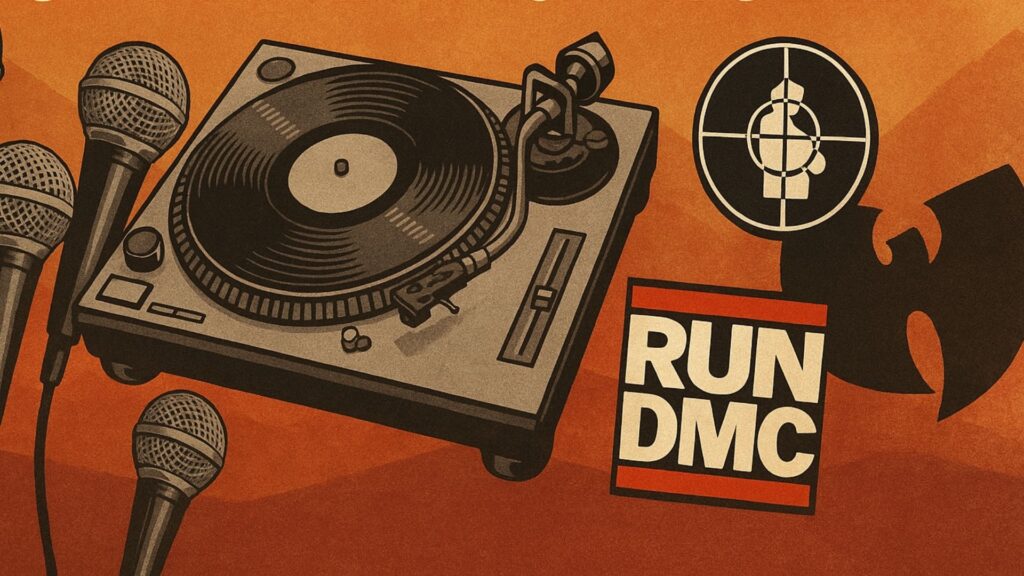
Seven Wonders Of The Hip-Hop World: Part I—7 Albums That Changed Rap History

Writer Shad Reed gets past the trends and into the immortal albums that have shaped Hip-Hop.
An onslaught of Hip-Hop “Mount Rushmores ” has recently flooded social media and various internet spaces to continue the never-ending debate of “the best.” However, with all due respect to the four faces on that sculpture in South Dakota, a more appropriate equivalent, given Hip-Hop’s rich history, is the Seven Wonders of the World.
Unlike the faces of the four former presidents, who were people etched in stone on Mount Rushmore, there’s no official list of the Seven Wonders of the World. A German scholar named Wilhelm Heinrich Roscher acquired a list of 18 known lists of wonders of the ancient world. Roscher’s findings, first published in 1906, only identified two identical ones (one of which was suspected to be a copy of the other) of the eighteen lists. Roescher’s research also revealed that there were 22 names and 82 places. In the early 2000s, a foundation in Switzerland conducted a worldwide poll to determine “the Seven Wonders of the Modern World.” While one list emerged, it still received criticism because it allowed people to cast multiple votes, which was deemed unscientific. Plus, the seven winners came from 22 candidates, which began with 77—still lots of room for interpretation.
Therefore, whether Hip-Hop or historical landmarks, there’s no right or wrong answer if the passion is genuine. It all comes down to defending the choices made. And so, here are seven albums that many agree changed rap for the better. And just as there are “Seven Wonders of the Ancient World” and “Seven Wonders of the Modern World,” it’s only right that Hip-Hop albums receive two separate collections, too. These are not ranked either but instead presented in chronological order. Stayed tuned for Part II.
While Run-DMC’s eponymous debut is a classic, it wasn’t until their third offering that Run, DMC and Jam Master Jay perfected, to paraphrase a line from “My Adidas,” taking the beat from the street and putting it on TV. It’s also a masterclass in song concepts, most notably “It’s Tricky” (a rap song about how hard it is to rhyme) and “Walk This Way,” a cover and collaboration with the record’s originators, Aerosmith, proving that rap wasn’t something to be feared but embraced.
Paid in Full by Eric B. & Rakim (1987)
Rakim is regarded as the “God MC” because of the skillset he demonstrated here. His esteemed lyricism set a bar that rappers today are still trying to match (and very few have). The production perfectly emphasized his words, and Rakim elevated rap from rhyming on a beat to delivering poetry over music. Paid in Full is the first album showing that rap albums are truly an art form, not just a collection of records. The game hasn’t been the same since.
It Takes a Nation of Millions to Hold Us Back by Public Enemy (1988)
Public Enemy’s second album proved that Hip-Hop can bring about social change. The project’s uptempo feel brought an energy to it that was previously unseen and ultimately made it that much more effective. Chuck D’s commanding voice, Flavor Flav’s charisma and The Bomb Squad’s sonic landscapes created a sense of urgency that no one could avoid.
Other Native Tongues albums from artists like The Jungle Brothers, De La Soul and Queen Latifah preceded this. However, during this sophomore set from Tribe, the movement reached its apex. Drums. Jazz samples. Creative and conscious lyrics. No matter how anyone checked the rhyme, A Tribe Called Quest was always on point. Last but not least, “Scenario” introduced Busta Rhymes to the mainstream with one of the most legendary guest verses in rap history.
The Chronic album is one of the best albums ever produced in any genre, not just Hip-Hop. Dr. Dre’s mastery behind the boards is on full display; his ability to make aggressive content sound smooth was unprecedented. Additionally, the chemistry with Snoop Dogg that was already apparent from “Deep Cover” continued its evolution and resulted in some of the best Hip-Hop music ever. Therefore, it is no surprise that in 2019 the Library of Congress selected the album for preservation in the National Recording Registry.
Atop cinematic beats and some cool samples (including the theme song to “Underdog”), Hip-Hop maestro The RZA assembled a nine-man collective, whose debut reflected the gritty New York streets in a truly original way. Inspired by Eastern cinema and kung-fu, how he incorporated those elements in his and fellow rhymesayers’ depictions of their humble upbringing is nothing short of brilliant. “C.R.E.A.M.” is slang that Wu introduced, which still hasn’t gone out of style, and “Protect Ya Neck” is arguably one of the greatest debut singles spawned from the Hip-Hop genre.
With Illmatic, Nas fulfilled the promise he showed on Main Source’s “Live at the BBQ” and “Back to the Grill.” With lyrical abilities unseen since Rakim, the 10-track LP was already something spectacular. The icing on the cake, though, was that he also assembled all of the top New York producers to create a cohesive album that came together perfectly. Even in Nas’ famous battle with JAY-Z, Jigga had to tip his hat to this fantastic release. “Four albums in 10 years, n####? I could divide/That’s one every, let’s say two, two of them s#### was doo/One was nah, the other was Illmatic /That’s a one hot album every 0 year average.”
To Be Continued…

